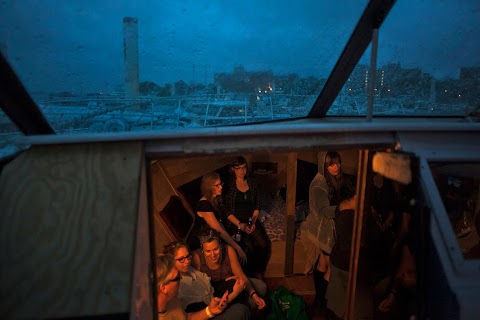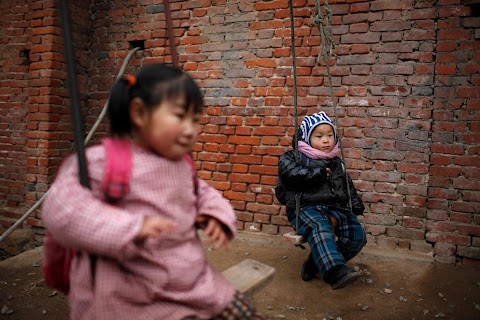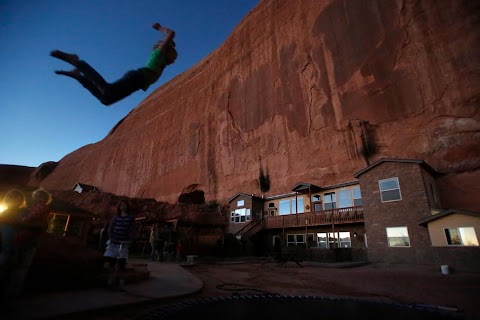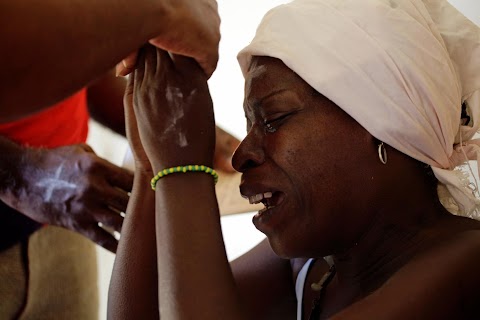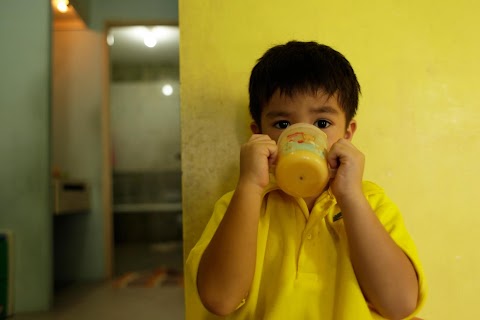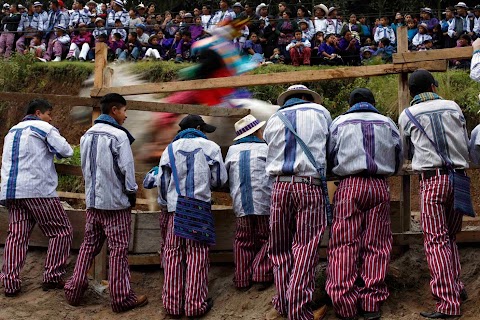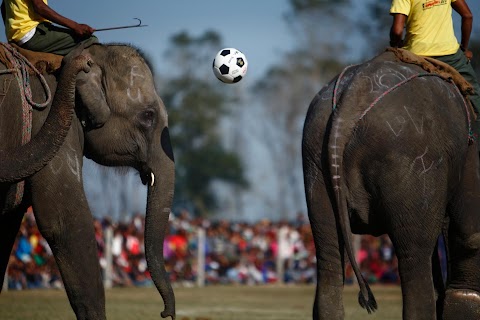
A huge attraction
 Navesh Chitrakar
Navesh Chitrakar
Elephants play an important role in Nepal’s burgeoning tourist industry, and nowhere does that seem to be more evident than during Chitwan's “International Elephant Race”. The title does not do full justice to the range of events involved in what is actually a three-day festival in which elephants play the starring role - participating not just in races but also beauty pageants and soccer matches.

Elephants return with their trainers – known as mahouts – after collecting food from Chitwan National Park before the start of the first day of the race. The elephants that take part are tame animals, most of which are owned by the government, and which usually work carrying tourists through the park on safari.

Each of the government-owned elephants has three mahouts to take care of it, and the trainers begin working with the animal when it is still very young so they normally develop a close relationship.

The Elephant Race offers a huge boost to the local tourist industry as money flows in with the national and international tourists who travel to see the events and local banks, hotels and other businesses sponsor the teams of elephants.
Slideshow

Judges inspect an elephant decorated for the Elephant Beauty Pageant. The animals are rated not only for their decorations, but also for the quality of their skin.

An elephant kicks the ball during an exhibition soccer match on the final day of the event.

Local children run to watch the elephants play soccer on the last day of the festival, when thousands of spectators came to watch.

The elephants don't actually learn how to play soccer themselves, but are directed during the matches by their mahouts.

An elephant runs to the finish line on the first day of the elephant race. The track is 300 meters long and six meters wide and a maximum of six elephants participate at a time.

An elephant picks up a ball in its truck during a soccer match.

It is traditional to decorate elephants, but the animals taking part in the beauty pageant tend to be adorned more elaborately than normal.
“It has to be said, elephants are not natural soccer players”
Chitwan’s “International Elephant Race” is a big deal. Big for the area’s tourism industry, big for local community and big because of the size of its 5000 kg (70,000 lbs) participants.
In fact, the name is a bit misleading. First, the race is not all that international: I saw one Australian guy participate, but most of the others taking part were locals. Secondly, it’s not really just a race: it’s a three-day festival that involves elephant racing, an elephant beauty contest, horse and ox-cart racing, and – probably most popular among the spectators – elephant soccer.
The event gets started with a procession by the local Tharu people. Lots of them come and participate, not least because it’s an important driver for the industry that many of them depend on for a living – tourism.
Normally, tourists come here to Chitwan to see the national park, which is one of the last remaining homes of the Bengal Tiger and the one-horned Asiatic rhino in the wild. Many of the park’s visitors go looking for these rare animals, and while they do so they often ride on the backs of tame elephants, most of which are owned by the government.
But if tourists were to come looking for one of these safaris during the Elephant Race, then they would probably be disappointed. The animals are almost all busy taking part in the festival.
During the event, the elephants go racing every day, and you can pay around $230 for the privilege of riding one as it competes. That doesn’t mean you’re driving the elephant– you’re just sitting behind the elephant’s trainer, known as a “mahout,” who does all the steering. You’d be lost if you tried to do it yourself!
There’s also a beauty contest, in which the animals are adorned with paint and jewellery and then ranked on the quality of their decorations and their skin. It’s traditional to decorate elephants a little bit, but what I saw was more elaborate that tradition demanded. In fact, some of the elephants looked very funny indeed, and made people laugh.
The day is rounded off with a soccer match, in which around four elephants compete on each team. It has to be said, elephants are not natural soccer players; they simply do what they are directed to by their mahouts, and sometimes they even get tired of that. I saw one elephant get bored of following orders during the match, and simply pick up the ball and throw it off the pitch.
But although the elephants sometimes get frustrated with the finer points of soccer, the relationship between them and their mahouts is very close.
I really enjoyed seeing the trainers get their elephants ready in the morning, just like they would do any other day. There are normally three handlers per elephant, who wake up at 3a.m. and collect their animal from the stable where it sleeps, then take it to the jungle to fetch food. After feeding their elephant, the mahouts have something to eat themselves, give their elephant a bath and get ready for their morning.
The elephants are paired with the mahouts when they are very young, and they can be very loyal to them – almost like a pet dog.
Yet although they are special one another, this isn’t just a domestic relationship. The mahouts are government employees and, for them, washing, feeding, and riding their elephant is a day at the office.
(Reporting by Navesh Chitrakar; Writing by Hannah Vinter)

A mahout climbs his elephant as he heads towards Chitwan National Park on the last day of the event.
